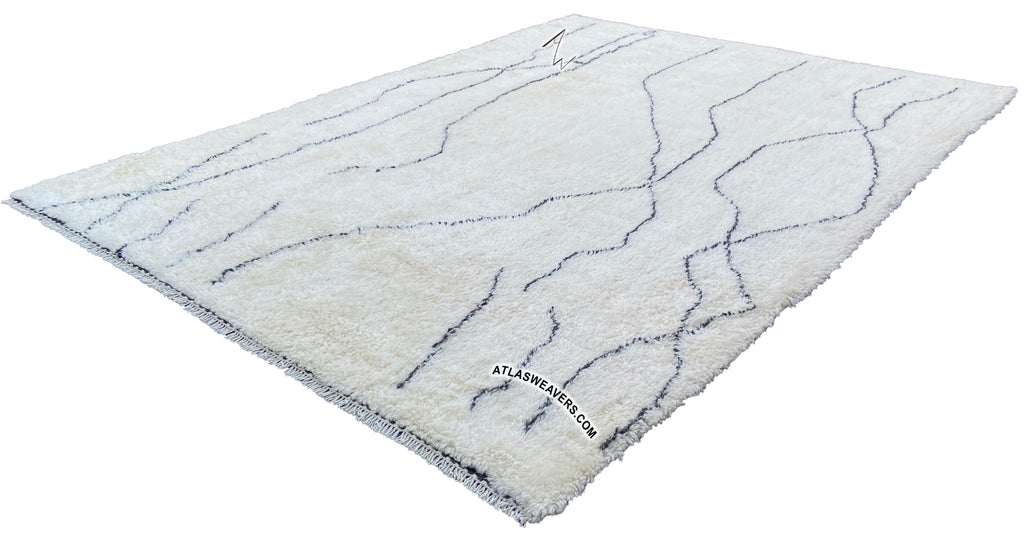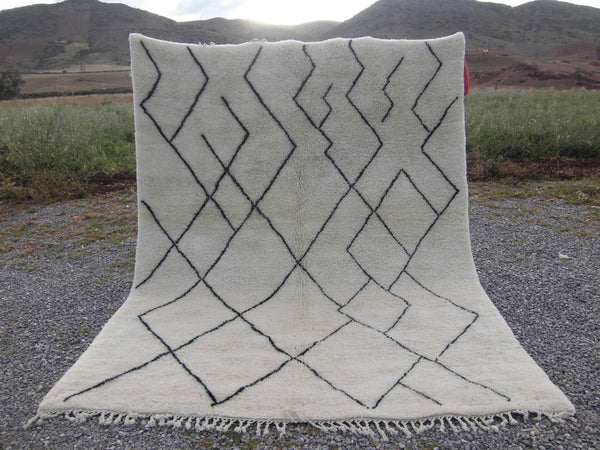Beni Ourain - Berber Weave - M229









Sizes
9.2 x 12
Large
Price
$4300.00
$ 3700.00
Size
9.2 x 12
Large
Material
100% Wool
Price
$4300.00
$ 3700.00
Product Info
Complimentary shipping
Shaggy Moroccan Beni Ourain
Inside studio photos & outdoor in the natural light
Light cream background - Blk Charcoal lining
Wool that feels like silk no shedding
Size 9.2 x 12
Moroccan rug motifs influenced designers such as Ivan Da Silva Bruhn and Vladimir Boberman. American Interior Designer Francis Elkins used them in some of her most notable interiors in the 1930’s and 1940’s.
By Raz,
Many examples of Berber carpets show shifts in the pattern, reflecting a change in life events, a different weaver taking over the rug or spontaneous creative expression. As many Berber women believe the rugs are imbued with a spirit, either from the imprint of the artist or from the living nature of the wool, they resist monitoring the progression of their work, often revealing the entire rug only after it has been completed. Once the deeply laborious weaving process is completed, the finished rugs are considered part of the family and are the prized possession of the home.
While preserving history, the elemental nature of Berber weaving is an execution of pure instinct. Weaving is not only an inherent rite of passage but also an act of expression. The women that manifest these works have a story to tell: While some rugs document a personal experience, other weavings carry a more ancestral message passed down over time. Many of the artist's artisans weave their tales organically, while others intentionally channel inherited knowledge into the loom. The life rituals of the Berber women, including fertility, birth, and the protective role of men, are narrated in an abstract form. It is pure coincidence that the Berber carpets, with their simplistic form and geometric purity, appear modern to the Western eye, as each one is deeply rooted in ancient history.
CUSTOM MADE
For most discerning rug buyers, we fulfill custom orders for rugs produced from scratch.
RETURNS
Our customers have a two weeks return policy, one year trading policy for other sizes or designs.




